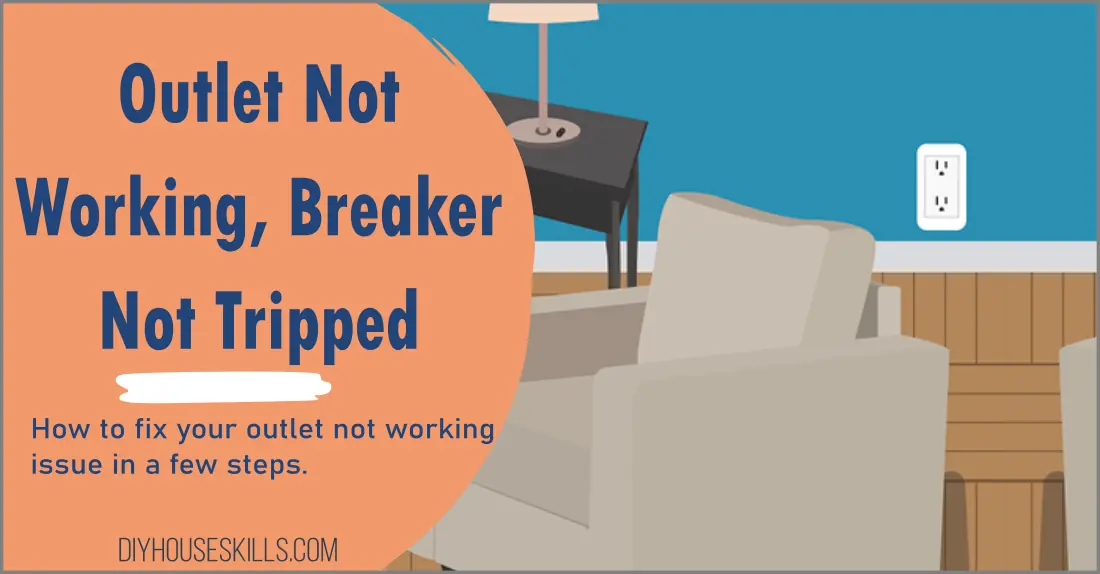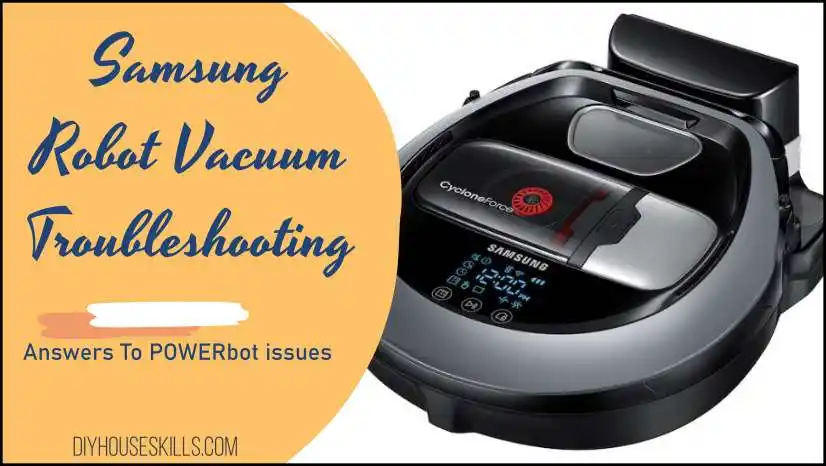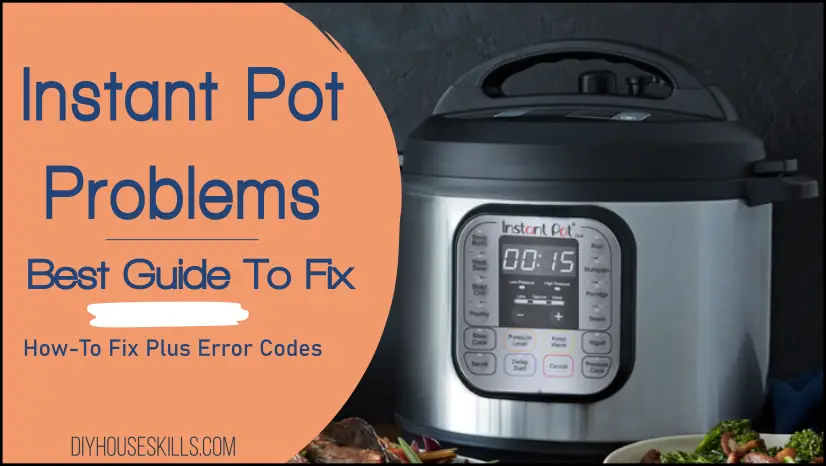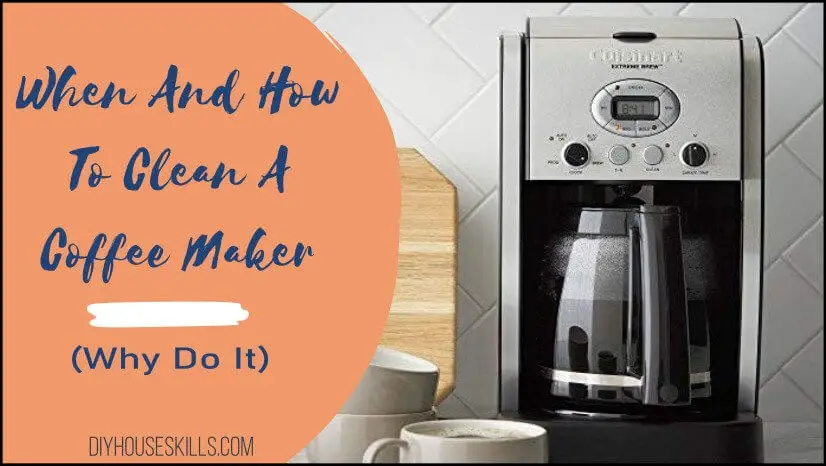What To Do When Your Outlet Is Not Working But The Breaker Isn’t Tripped
Experiencing an outlet that’s not delivering power can be perplexing, especially when the circuit breaker hasn’t been tripped. This common issue can often be resolved without needing to call an electrician.
Here’s a quick rundown to help pinpoint and possibly fix the problem:
Immediate Solution
- Quick Check: Reset the breaker, inspect the outlet with a circuit tester, and reset any tripped GFCI outlets.
- Wiring Inspection: With the power off, check the outlet for loose wiring and secure connections.
- Outlet Replacement: If the outlet is faulty or worn, replace it with a new one of the same amperage and configuration.
Note: This information applies to standard-voltage household electricity, not high-voltage receptacles.
For those seeking a more detailed guide, your questions might include:
Follow-Up Questions
Under each of these questions, we’ll explore the subjects in depth to ensure you have all the information needed to tackle this electrical nuisance effectively.
- Tools needed:
- Outlet Not Working, Breaker Not Tripped
- First Steps: Check The Fuse or Breaker Panel
- Plug-In Tester: Check The Outlet
- GFCI Outlets
- Check The Outlet Wiring
- Replacing an Outlet
- When All Else Fails
- Receptacle Problems and Repairs
- Outlet Not Working FAQs
- FAQs
- 1. Why Did My Outlet Stop Working Suddenly Even Though the Breaker Wasn’t Tripped?
- 2. What Should I Do If My Outlet Has No Power, But the Breaker Is Not Tripped?
- 3. My Outlet Isn’t Working and the Breaker Is Fine; What Else Can I Check Before Calling a Pro?
- 4. Why Does My Outlet Make a Crackling Noise When I Plug Something In?
- 5. What Causes One Outlet to Trip a GFCI But Not Others on the Same Circuit?
- Outlet Not Working, Breaker Not Tripped – Summary
THIS POST MAY CONTAIN AFFILIATE LINKS. As an Amazon Associate, I earn from qualifying purchases. PLEASE READ MY DISCLOSURE FOR MORE INFO.
Note: This information applies to standard-voltage household electricity, not high-voltage receptacles. Never attempt a project that is beyond your skill level. Knowing when to call a professional may help prevent electrical fires, injuries, and fatalities.
Tools needed:
- Plug-in Circuit Tester – get one from Amazon.
- Flathead Screwdriver
- Phillips Screwdriver
See this related post: Light Switch Is Not Working | Advice To Fix
Outlet Not Working, Breaker Not Tripped
An outlet, or receptacle as it is correctly termed, that is not working will be caused by either a fuse or breaker, an issue in the wiring, or an issue with the receptacle itself.
What to look for and how to diagnose the issue. Work your way down this list:
First Steps: Check The Fuse or Breaker Panel
When an outlet isn’t working, and the breaker hasn’t tripped, start by resetting the breaker assigned to the malfunctioning outlet.
Double-check your breaker panel. It’s an easy oversight, mistaking a non-tripped breaker for a functional one.
Turn the breaker for this circuit off and then back on.
Why: You want to establish that there is power feeding the wiring to the receptacle.
- Flip the breaker assigned to your malfunctioning outlet off and then back on to reset the connection. This quick step can often breathe life back into your outlet as if by magic.
According to the Electrical Safety Foundation International, resetting breakers correctly can solve electrical issues without further action around 70% of the time.
Following this, examine the outlet with a plug-in circuit tester to check for power.
Plug-In Tester: Check The Outlet
A plug-in circuit tester is an invaluable tool for diagnosing outlet issues.
The Handy Plug-In Tester
For a treasure hunt in outlet diagnostics, grab a plug-in tester.
These little gadgets are your eyes into the outlet’s soul, telling you whether it’s getting any power at all.
- Plug it in; no lights mean no power. Simple!
You can find a plug-in outlet/receptacle tester at most hardware stores and many have indicators that report various issues. They often come with feature indicators for more complex issues, making them a DIYer’s best friend.
GFCI Outlets
Ground Fault Circuit Interrupter (GFCI) outlets are designed to prevent electrical shock by shutting off power if a fault is detected.
- To reset a GFCI outlet, simply press the “reset” button located on the face of the receptacle itself.
These outlets are commonly found in bathrooms, kitchens, and other wet areas. If your outlet is not working, check for a tripped GFCI outlet nearby and press the reset button.
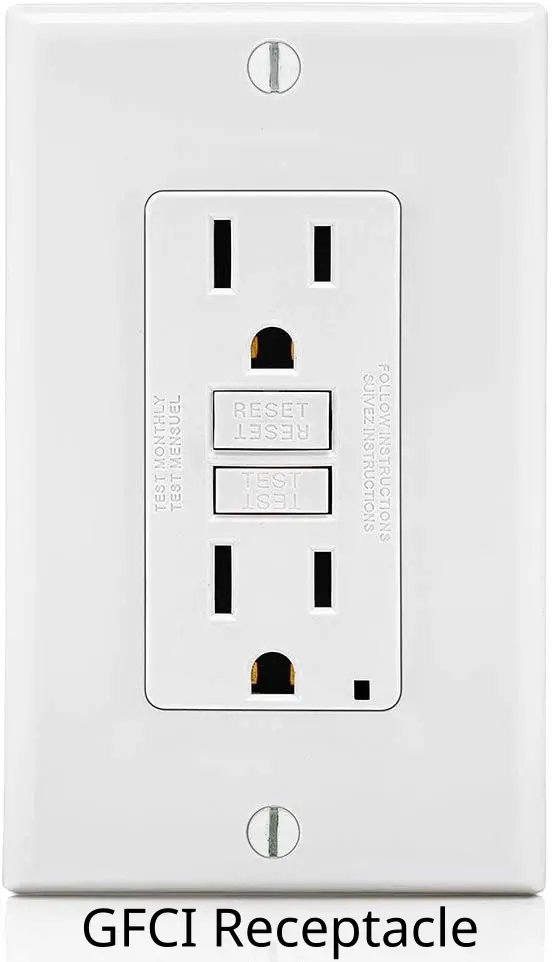
Check The Outlet Wiring
One of the most common reasons why a receptacle might not be working is because there is a loose wire somewhere along the line. To check for this, you’ll first need to turn off the power to that specific circuit at your breaker box.
Once the power is off:
- Remove the faceplate of the receptacle with your flathead screwdriver.
- Unscrew the receptacle from the box, it is secured with two screws.
- Carefully pull the receptacle from the box bringing with it the electrical wires.
If any of the wires are loose or not connected properly, that could be causing the issue. To fix it, simply twist the wire around the screw and then tighten the screw.
Tip: Use fine sandpaper to lightly sand and clean the ends of the exposed wiring.
Check Nearby Outlets
If this has not resolved the issue, test nearby receptacles for power and check for loose wiring on any that are not working. Follow the same procedure as above, and make sure the circuit has been turned off at the service panel.
Why: Several receptacles are connected to a single circuit and a fault on one outlet can extend to the others.
Tip: Start your testing with the receptacle closest to the breaker panel.
Why would outlets and a ceiling fan suddenly stop working?
Note: I once had a ceiling fan stop working and I discovered a couple of outlets also were not working. It turns out a connection on one of the receptacles had come loose causing the whole problem. All I had to do was reconnect the wire and everything started working again.
Replacing an Outlet
Though it is not common, over time, outlets can become worn down and stop working properly. If this is the case, you’ll need to replace the outlet entirely.
While the power is still off to the circuit, inspect the receptacle for brittle parts that have broken, scorch marks on the back or sides, or loose plugs.
Note: Replace with an identical receptacle of the same amperage and slot configuration.
To do this:
- You’ll first need to turn off the power to that specific circuit at your breaker box.
- Once the power is off, remove the faceplate and receptacle and disconnect the wires from the old outlet.
- Then, connect them to the new outlet (in the same configuration) and replace the faceplate.
- Finally, turn on the power at your breaker box and test out your new outlet.
When All Else Fails
If, after all these steps, the outlet still isn’t working, the problem might be more complex, such as a break in the wiring. At this point, consulting a licensed electrician is the best course of action. They can diagnose and repair issues that go beyond simple DIY fixes.
By following these steps, most issues with non-functioning outlets should be resolved. Remember, safety comes first, so take necessary precautions or consult a professional if you’re unsure at any point.
Receptacle Problems and Repairs
The circuit breaker repeatedly trips
- Faulty lamp or appliance plugged into the outlet.
- Loose receptacle wiring. Fix as shown above.
- Faulty receptacle. Replace as shown above.
The receptacle buzzes or is warm
- The circuit may be overloaded.
- Loose receptacle wiring. Fix as shown above.
- Faulty receptacle. Replace as shown above.
Outlet Not Working FAQs
Yes, an outlet (receptacle) can fail without tripping the circuit breaker. The most likely cause is a loose wire connection. Outlets have internal components that can also fail, causing the receptacle to stop working.
Most homes built after 1950 will have three-pronged grounding outlets. You can test for a ground connection with a circuit tester. The third prong is the ground wire. If the outlet is not grounded, you’ll need to have an electrician install a grounding rod and wire.
Multiple outlets not working may be due to a wiring issue. Check for a loose connection on the outlet closest to the service panel.
This may be a faulty receptacle, or it has been installed correctly this way to allow an appliance such as a lamp to be plugged in and controlled by a light switch.
FAQs
1. Why Did My Outlet Stop Working Suddenly Even Though the Breaker Wasn’t Tripped?
Situation: You experience a sudden loss of power to an appliance or a group of appliances, such as box fans operating via a power strip, without any signs of a tripped power strip or circuit breaker.
Answer: The abrupt stop in power could likely be a result of a power surge or an overload that didn’t necessarily trip the breaker but may have caused a fail-safe mechanism within the power strip or a fault in the outlet itself.
It’s not inherently dangerous if it’s a one-time occurrence, but it’s crucial to inspect the outlet and the power strip for any signs of damage. If this issue persists, consider consulting with a professional electrician to ensure there’s no underlying dangerous fault.
2. What Should I Do If My Outlet Has No Power, But the Breaker Is Not Tripped?
Situation: You find that an appliance, like a dishwasher, stops working, and the outlet it’s connected to is not functioning even though no circuit breaker has been tripped. Attempts to reset the breaker did not resolve the issue, raising concerns that it is beyond a simple tripped breaker.
Answer: A common cause of this issue is a tripped GFCI (Ground Fault Circuit Interrupter) outlet that is not immediately visible because it may be located in a different area of the house.
These outlets are designed to protect against electrical shock by shutting off power when a fault is detected. Locate all GFCI outlets in your home and press the reset button.
If this resolves the issue, no further action is needed. However, if the problem persists, it may be time to call a professional, as the issue could be more complex, involving a break in the circuit not visible to the layperson.
3. My Outlet Isn’t Working and the Breaker Is Fine; What Else Can I Check Before Calling a Pro?
Situation: You discover that an essential outlet, like one powering a dishwasher, has suddenly lost power. You’ve confirmed that the circuit breaker hasn’t tripped and identified no tripped GFCI outlets initially. However, upon further inspection, a GFCI outlet in an unrelated part of the house was found to be tripped and, once reset, power was restored.
Answer: Before contacting a professional, it’s worthwhile to conduct a thorough inspection of all GFCI outlets in your home. These outlets could be located in areas not immediately obvious but still connected to the circuit affecting your appliance. If resetting these doesn’t solve the problem, or if there are no GFCI outlets to reset, then the issue may lie within the wiring or the outlet itself, at which point consulting an electrician is recommended.
4. Why Does My Outlet Make a Crackling Noise When I Plug Something In?
Situation: Upon plugging a device into an outlet, you notice a concerning crackling noise that persists for a few seconds. The outlet still appears to function, but the noise raises safety concerns.
Answer: A crackling noise from an outlet should never be ignored as it may indicate a loose electrical connection, damaged wires, or a faulty outlet, all of which could lead to a potential fire hazard. Initially, cease using the outlet immediately and unplug any connected devices. It’s vital to contact a licensed electrician who can safely assess and repair the issue. In the meantime, avoid handling the outlet directly to prevent any risk of electrical shock.
5. What Causes One Outlet to Trip a GFCI But Not Others on the Same Circuit?
Situation: You’ve noticed that plugging an appliance into a specific outlet causes the GFCI to trip, yet other outlets on the same circuit don’t seem to have this issue when using the same appliance.
Answer: GFCI outlets are designed to protect against ground faults by comparing the input current on the hot side to the output current on the neutral side. A discrepancy between these currents, often caused by electrical leakage through a ground fault, triggers the GFCI to trip. If one particular outlet consistently causes the GFCI to trip, it could be due to a ground fault within the outlet itself, or the appliance being used. It can also indicate that the outlet wiring is compromised or that the appliance is malfunctioning and causing a dangerous current leak. It’s essential to have an electrician evaluate the outlet and the circuit to identify and resolve the underlying issue to ensure your electrical system’s safety.
Outlet Not Working, Breaker Not Tripped – Summary
Outlets provide power to our devices and appliances so that we can stay connected and productive. However, sometimes outlets stop working for no apparent reason. Before you start tearing apart your walls looking for a loose wire, there are a few things you can check.
If your outlet stops working and you’ve checked that the breaker hasn’t been tripped, there are a few things you can try before calling in an electrician. The easiest is to use a plug-in tester, next check for loose wires by removing the faceplate and inspecting them. If all of the wires seem to be secure, try replacing the outlet entirely by following the steps above. With any luck, one of these solutions will solve your problem quickly and easily.

I’m J.S., I created and am the content manager at DIYHouseSkills.com. I do the research and write the articles that appear on this website. I’ve learned many household skills during my life and think it’s important to at least know the basics so that you can save yourself time and money… READ FULL BIO >
Discussions
Other DIY Maintenance Articles
- Samsung Robot Vacuum Troubleshooting + AdviceSamsung robot vacuum troubleshooting is for anyone experiencing issues with their POWERbot vacuum. Answers to your Samsung robot vacuum problems are covered in my article as I discuss the most common issues users have. Troubleshooting Samsung POWERbot Vacuums Robot vacuum problems can be a real headache. These intelligent devices make life easier when operating as expected. However, when issues arise it can be difficult… Read more: Samsung Robot Vacuum Troubleshooting + Advice
- Instant Pot Problems, Best Guide To FixUpdated: 10/29/2022 It’s no fun when you attempt to use your Instant Pot and discover some problems with it. Whether it is not sealing correctly, leaking, or you see error codes, this guide will help you troubleshoot and fix those issues to get you back to cooking. Users of all levels can resolve their Instant Pot problems with my step-by-step guide such as fixing… Read more: Instant Pot Problems, Best Guide To Fix
- Coffee Maker Cleaning for a Tastier Daily BrewDespite their importance in our morning routines, coffee makers are often overlooked when it comes to regular cleaning. However, neglecting to clean your coffee maker can have a significant impact on the quality and healthiness of your daily brew. In this post, we will explore the reasons why regular cleaning of your coffee maker is crucial. We will provide a simple and effective cleaning… Read more: Coffee Maker Cleaning for a Tastier Daily Brew
- How To Descale A Nespresso Machine: Instructions GuideTo help you maintain peak performance from your Nespresso machine, we’ve put together this guide on descaling. Follow these steps diligently to keep your coffee experience at its best As a proud owner of a Nespresso machine, you already know the joy it brings to your morning routine. The rich aroma and velvety smooth taste of each cup are unparalleled. However, to ensure that… Read more: How To Descale A Nespresso Machine: Instructions Guide
- Easy Dishwasher Cleaning: How to Remove Odors, BacteriaThe best guide for easy dishwasher cleaning Your dishwasher is one of the most important appliances in your home. Not only does it make clean-up a breeze, but it also helps to keep your dishes clean and bacteria-free. However, if you don’t clean it on a regular basis, it can become a cesspool of bacteria, fungus, and odors. In this blog post, we will… Read more: Easy Dishwasher Cleaning: How to Remove Odors, Bacteria
